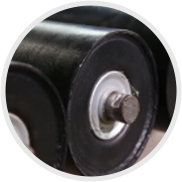 Afrikaans
Afrikaans  Albanian
Albanian  Amharic
Amharic  Arabic
Arabic  Armenian
Armenian  Azerbaijani
Azerbaijani  Basque
Basque  Belarusian
Belarusian  Bengali
Bengali  Bosnian
Bosnian  Bulgarian
Bulgarian  Catalan
Catalan  Cebuano
Cebuano  Corsican
Corsican  Croatian
Croatian  Czech
Czech  Danish
Danish  Dutch
Dutch  English
English  Esperanto
Esperanto  Estonian
Estonian  Finnish
Finnish  French
French  Frisian
Frisian  Galician
Galician  Georgian
Georgian  German
German  Greek
Greek  Gujarati
Gujarati  Haitian Creole
Haitian Creole  hausa
hausa  hawaiian
hawaiian  Hebrew
Hebrew  Hindi
Hindi  Miao
Miao  Hungarian
Hungarian  Icelandic
Icelandic  igbo
igbo  Indonesian
Indonesian  irish
irish  Italian
Italian  Japanese
Japanese  Javanese
Javanese  Kannada
Kannada  kazakh
kazakh  Khmer
Khmer  Rwandese
Rwandese  Korean
Korean  Kurdish
Kurdish  Kyrgyz
Kyrgyz  Lao
Lao  Latin
Latin  Latvian
Latvian  Lithuanian
Lithuanian  Luxembourgish
Luxembourgish  Macedonian
Macedonian  Malgashi
Malgashi  Malay
Malay  Malayalam
Malayalam  Maltese
Maltese  Maori
Maori  Marathi
Marathi  Mongolian
Mongolian  Myanmar
Myanmar  Nepali
Nepali  Norwegian
Norwegian  Norwegian
Norwegian  Occitan
Occitan  Pashto
Pashto  Persian
Persian  Polish
Polish  Portuguese
Portuguese  Punjabi
Punjabi  Romanian
Romanian  Russian
Russian  Samoan
Samoan  Scottish Gaelic
Scottish Gaelic  Serbian
Serbian  Sesotho
Sesotho  Shona
Shona  Sindhi
Sindhi  Sinhala
Sinhala  Slovak
Slovak  Slovenian
Slovenian  Somali
Somali  Spanish
Spanish  Sundanese
Sundanese  Swahili
Swahili  Swedish
Swedish  Tagalog
Tagalog  Tajik
Tajik  Tamil
Tamil  Tatar
Tatar  Telugu
Telugu  Thai
Thai  Turkish
Turkish  Turkmen
Turkmen  Ukrainian
Ukrainian  Urdu
Urdu  Uighur
Uighur  Uzbek
Uzbek  Vietnamese
Vietnamese  Welsh
Welsh  Bantu
Bantu  Yiddish
Yiddish  Yoruba
Yoruba  Zulu
Zulu conveyor idler types
Understanding Conveyor Idler Types
Conveyor idlers play a crucial role in the operation of conveyor systems, which are integral to various industries, including mining, manufacturing, and logistics. These idlers support the weight of the conveyor belt and the material being transported, ensuring smooth and efficient operation. With numerous types of conveyor idlers available on the market, each designed to meet specific operational requirements, understanding these options is essential for selecting the right equipment for your application.
What Are Conveyor Idlers?
Conveyor idlers are cylindrical components that are mounted on frames to support the conveyor belt. They are situated at various intervals along the conveying system, providing support and ensuring that the belt remains aligned. In addition to support, idlers facilitate the movement of the belt, reducing friction and wear while enhancing the overall efficiency of the conveyor system.
Types of Conveyor Idlers
1. Flat Idlers
Flat idlers are the most common type of conveyor idler. They consist of a cylindrical roller mounted horizontally, allowing the conveyor belt to rest and move along its surface. Ideal for conveying bulk materials, flat idlers are widely used in industries such as mining and aggregate handling. They are often available in various sizes and materials to suit specific load capacities and environmental conditions.
Trough idlers are designed with a slight angle, typically between 20 to 30 degrees, which allows the conveyor belt to form a “trough” shape. This design is beneficial for transporting loose materials, as it helps contain the material within the confines of the belt, reducing spillage and loss. Trough idlers improve stability and are commonly found in bulk material handling applications, such as coal, ore, and grain transportation.
3. Impact Idlers
conveyor idler types

When materials are loaded onto a conveyor belt, the impact can create significant stress on the belt and idler system. Impact idlers are specifically designed to absorb this shock, providing additional cushioning at loading points. These idlers often feature a robust structure and high-quality components to withstand the harsh impacts of heavy loads. Using impact idlers can enhance the longevity of the conveyor system by reducing wear and tear.
4. Return Idlers
Return idlers are located on the underside of the conveyor belt, supporting the weight of the belt as it returns to the loading area. They maintain the belt's alignment and prevent sagging. Typically flat, return idlers help reduce the friction that can occur when the belt returns empty, thus conserving energy and prolonging the life of the idler system.
5. Self-Aligning Idlers
In applications where belt misalignment is a common issue, self-aligning idlers offer a solution. These idlers feature a unique design that allows them to pivot and adjust as the belt shifts, helping to realign it without manual intervention. This feature reduces wear on the conveyor system and minimizes the risk of catastrophic belt failure.
6. Rubber Disc Idlers
Rubber disc idlers incorporate rubber discs on their surfaces and are used primarily in applications where material buildup on the idlers can be an issue. The rubber surface prevents material from sticking to the idlers, ensuring smooth operation and reducing maintenance requirements. This type of idler is widely used in applications where materials are prone to caking or sticking.
Conclusion
Selecting the appropriate idler type for your conveyor system is critical for optimizing performance and extending the equipment's lifespan. Understanding the various types of conveyor idlers, including flat, trough, impact, return, self-aligning, and rubber disc idlers, allows you to make informed decisions that enhance productivity and efficiency. Whether you are in mining, manufacturing, or any other industry relying on conveyor systems, ensuring that you choose the right idler type will contribute significantly to your operational success. Consider consulting with a conveyor specialist to determine the best solution tailored to your specific needs and challenges.
-
Trusted Conveyor Solutions from Leading Conveyor Idler Roller ManufacturersNewsJun.27,2025
-
Reliable Return Idler Solutions for Efficient Belt Conveyor SystemsNewsJun.27,2025
-
Precision Conveyor Accessories for Streamlined Material HandlingNewsJun.27,2025
-
High-Quality Belt Conveyor Idler Solutions for Efficient Material HandlingNewsJun.27,2025
-
High-Performance Belt Conveyor Pulleys for Reliable Material HandlingNewsJun.27,2025
-
Enhancing Material Handling EfficiencyNewsJun.27,2025





























